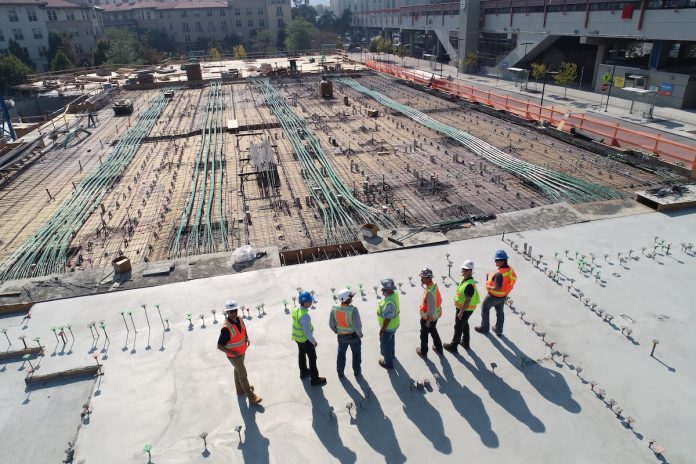3 Ways You Can Cover or Decorate Concrete Cuts
Concrete proves to be one of the best construction materials to this day. With its strength and durability, it can last for decades. However, one of the issues with concrete is that constructors need to decorate concrete cuts in freshly laid concrete to prevent cracking. These cuts can look unpleasant to the eyes and ruin the look of your design. In this article, we’ll go over three different ways to cover or decorate concrete cuts to get an aesthetic and cohesive look.
1. Decorative Cuts
Decorative concrete cuts are cuts made in concrete to add an aesthetic effect to concrete cuts. You can make decorative cuts anytime after you lay the concrete – even years later. Avoid freshly laid concrete, as it is too soft and can aggregate, resulting in jagged edges.
Decorative concrete cuts are usually 0.9-1.3 cm wide with a depth of around 14-15 mm. Decorative cuts are wider than construction cuts and are easier to grout, giving a flagstone or tile look. Below are some common types:
- Scored cuts: These are shallow cuts made in a geometric pattern on the concrete surface. These cuts create the look of stone patterns or tiles.
- V-Groove: These are cuts made at an angle, usually in a v-shaped pattern which creates grooves or channels on the concrete. They create the look of natural stones.
- Saw-cut designs: Saw-cut designs use a concrete saw to cut designs of intricate patterns or shapes into the concrete. Saw-cut techniques are usually used for custom designs and intricate patterns.
- Stamped cuts: Special tools are used in stamped cuts to create imprints of textures on the concrete surface. These cuts can recreate the look of multiple materials like wood, brick, and cobblestones.
- Decorative joints: Any design, like straight curves or geometric shapes, is made at regular intervals with decorative joints.
- Routed cuts: A router tool creates grooves or patterns on the concrete. It is used to create engraved or embossed designs.
You can make decorative lines using a handheld or walk-behind saw with a diamond blade. Hiring professionals like Cascade Concrete Sawing is recommended since they have the experience and precision to work on concrete.

2. Grout
You can fill concrete cuts with colored grout for a more complete and aesthetically pleasing look. It is recommended to use a color darker than the concrete color to give a slight tonal difference, contrasting the concrete pattern. Non-shrink grout is the best option for concrete, and if you’re interested in any other, then make sure it’s concrete-suitable grout.
3. Inlays
Inlays placed in concrete are available in multiple materials like timber, ceramic, tile, brass, and steel. You can place these inlays in two methods: the direct method, where you place the inlay and pour the concrete around it, or the indirect method, in which you box off the area where the inlay is to be placed and pour the concrete first. Here are a few types of commonly used inlays.
- Aggregates: Aggregates of different types, like glass chips, colored stones, and seashells, are embedded in concrete.
- Metal Inlays: Metal strips or sheets are inserted into the concrete to create patterns for decor. The most commonly used metals are brass, stainless steel, and aluminum since they are durable but also have great aesthetic appeal.
- Wood Inlays: Wood veneers or strips can be placed in concrete which gives warmth to the surface. This is a great way to fill in floor construction cuts.
- Fiber optics: Fiber optic cables are embedded in concrete to create lightning effects. These make a stunning visual display since these cables are illuminated with different colored lights.
Endnote
Construction cuts are created in concrete to prevent the concrete from cracking, but they can look aesthetically unpleasing. One of the ways to cover these construction cuts is to make decorative concrete cuts, which can be in multiple designs. You can also fill in these gaps with grout. Inlays made from various materials like wood and steel can also be placed to fill these gaps. It’s best to consult with a professional before deciding your final decision.





